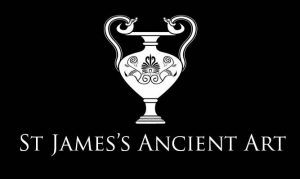The Romans frequently utilised the functional and decorative capabilities of glass to produce a wide array of objects. Unguentaria, such as this example, were used as containers for ointments, powders, balms, and other expensive liquids such as perfumes: the small mouth of the bottle is ideal for slow, careful pouring, while glass was preferred for holding liquids, due to its non-porous, non-absorbent nature. Perfume was very popular in Rome; it was produced in many different forms including as a solid, powder or liquid. It was so well used that Cicero declared that ‘the right scent for a woman is none at all’, suggesting an almost excessive use. Exotic scents were brought to the Roman people with the expanding trade to the East and became prominent displays of social status. Different scents would also have been used for different social occasions.
To discover more about the types and uses of unguentaria, please visit our relevant blog post: Roman Glass: Unguentaria and Cosmetics.










